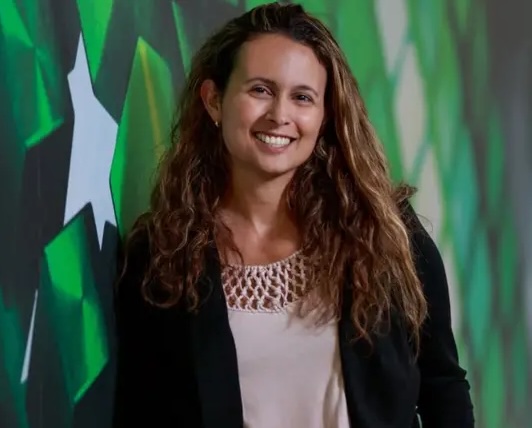- A 30FPS, milliWatt-scale, Passive Snapshot Depth Camera, John Mamish, Marcos Ferreria, Josiah Hester, Qi Guo, Emma Alexander, Yaman Sangar
- Creating a Topographic Map of the Human Cornea with a Smartphone: Specular Surface Reconstruction from Reflections in a Noisy Environment, Omer Siddiqui, Jacalyn Wasserman, Asef Dian, Nambi Nallasamy MD
- WildGS-SLAM: Monocular Gaussian Splatting SLAM in Dynamic Environments, Jianhao Zheng, Zihan Zhu, Valentin Bieri, Marc Pollefeys, Songyou Peng, Iro Armeni
- GenAIM: A Multimodal AI Music Generation Web Tool, Callie Liao, Ellie Zhang
- AI3D Render, Yosun Chang , Clara Burgert
- Generative Photography, Yu Yuan
- SimWorld: A World Simulator for Scaling Photorealistic Multi-Agent Interactions, Yan Zhuang, Jiawei Ren, Xiaokang Ye, Xuhong He, Zijun Gao, Ryan Wu, Mrinaal Dogra, Xiyan Zhang , Kai Kim, Bertt Wolfinger, Ziqiao Ma, Tianmin Shu, Zhiting Hu, Lianhui Qin
- Interactive Egocentric 3D Object Reconstruction from Sparse Observations, Yufeng Zhu,Zhaoyang Lv,Zhao Dong,Zhengqin Li
- StoryBuddy V2: AI-Powered Interactive Storytelling with Visual Context, Sumeet Kumar, Dhananjay Suresh Daundkar
- Open Vocabulary Attribution of 3D Buildings in City-Scale Photogrammetric Meshes, Hakeem Frank, Caleb Buffa, Justin Snider, Oktay Eker, Franziska Lippoldt, Justin Chae, Patrick Tutzauer, Dmitry Kudinov
- OpenIAI-SNIO: A Systematic AR-Based Assembly Guidance System for Small-Scale, High-Density Industrial Components, Yuntao Wang, Yu Cheng, Junhao Geng
- MSCAN - Explainable Lumbar Spinal Stenosis Diagnosis, Arnesh Batra, Arush Gumber, Anushk Kumar
- BreakBeat: AI-Powered Dance Movement Segmentation & Choreography Insight Platform, Jingwen Yang, Siyuan Liu, Jiawen Duan
- Real-Time Multimodal Modeling for Vision-Guided Urban Analytics, Mehmet Kerem Turkcan, Andrew W. Smyth
The AI art gallery will exhibit 16 artworks in interactive, installation and print formats and will showcase another 55 on 10 screens as a loop at the Exhibit Hall.
The following 16 artworks will be presented individually:
Alexander Rossa, Methodical Random (2025) Garin Curtis, Embodied / Divergent (2024) Gradient Lab Gradient Canvas (2025) Imke Grabe, Jaden Fiotto-Kaufman, Patch Explorer (2025) Isaac Clarke, For The Purposes of Rational Amusements (2025) Justin Urbach, Alexander Koenig, William East, Friedhelm Hamann, Guillermo Gallego, BLINDHÆD (2025) Kenan Tang, Compositionality and Parts (2024) Leandra Tejedor, The Meaning of, Mirror (2025) LoVid (Tali Hinkis and Kyle Lapidus), heartsleeves (2024) Masaru Mizuochi, Green Diffusion (2024) and Lingcam (2024) Tom White, Atlas of Perception (2025) Vikram Jamwal, Abhishek Dangati, Pavan Gajul, Composite Reflections (2025) Yamin Xu, The Flower (2025) Yue Feng, 3D Multiview Illusion (2025) Zhimeng He, A Piece of Deep Learning (2025)
Please check the website for the full online gallery, featuring 100+ artworks: https://thecvf-art.com/
Art Gallery Tour with Curator, Luba Elliott
This will be a guided tour of the gallery by the curator Luba Elliott and some of the exhibiting artists.
This panel will be moderated by Aaron Hertzmann (Adobe) and will feature presentations and discussion from the following gallery artists and researchers:
Tom White (Victoria University of Wellington) Friedhelm Hamann (Technical University Berlin) Imke Grabe (IT-University of Copenhagen) Isaac Clarke (The Hong Kong University of Science and Technology)
Gemini Robotics, Bringing AI to the Physical World
A new wave of general purpose robots is promising to bring helpful robots into many areas of human life. But in order to be truly useful, such robots require generalist embodied intelligence.
In order for robots to be helpful, they need to be capable of sophisticated skills, understand and reason about the world around them, interact with humans, and be able to generalize to new situations and tasks. I will discuss some of the building blocks that GDM Robotics is developing to this end, focusing on our recently released family of Gemini Robotics foundation models. Having been designed with robotics in mind, they combine Gemini’s world understanding with the ability to reason about the physical world and take action. With generality, interactivity, dexterity, and enhanced embodied reasoning they’re laying a foundation for a new generation of helpful robots.
